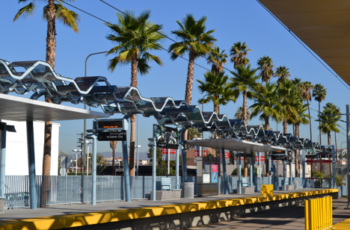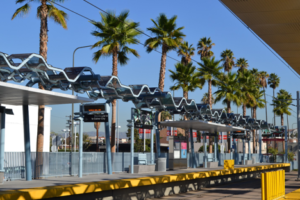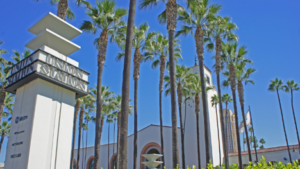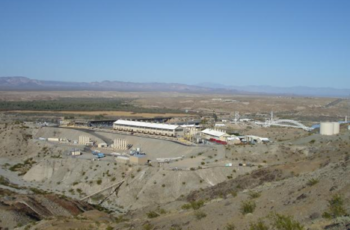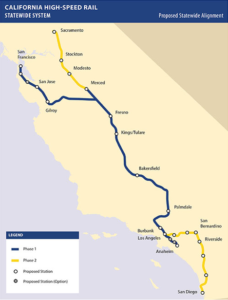On October 16, 2017, the First District Court of Appeal published its decision in Placerville Historic Preservation League v. Judicial Council of California (2017) 16 Cal.App.5th 187, upholding the San Francisco County Superior Court’s denial of a petition for writ of mandate challenging the Judicial Council of California’s decision to certify a Final EIR and approve the New Placerville Courthouse Project.
Background
El Dorado County’s court facilities are currently divided between the Main Street Courthouse, a historic building in downtown Placerville, and the County administrative complex. The Judicial Council proposed to consolidate all court activities in a new three-story building to be built on undeveloped land adjacent to the County jail, less than two miles away from the existing Main Street Courthouse.
In October 2014, the Judicial Council published a draft EIR for the proposed new courthouse. The draft EIR acknowledged that retiring the downtown courthouse could have an impact on downtown Placerville. The EIR also recognized that the Judicial Council was required address neighborhood deterioration as a significant environmental effect under CEQA if urban decay was a reasonably foreseeable impact of the project. The draft EIR defined “urban decay” as “physical deterioration of properties or structures that is so prevalent, substantial, and lasting a significant period of time that it impairs the proper utilization of the properties and structures, and the health, safety, and welfare of the surrounding community.” The draft EIR concluded that urban decay, so defined, was not a reasonably foreseeable consequence of the new courthouse project.
Comments received both during and after the public review period on the draft EIR voiced the concern that closing the historic Main Street Courthouse could negatively affect businesses in downtown Placerville. In response to such concerns, the Judicial Council reiterated the draft EIR’s conclusion that the project was not likely to lead to urban decay. In support of this conclusion, the Judicial Council observed that it was working with both the city and county to develop a re-use strategy for the building that would support the downtown businesses and local residences. The Judicial Council also cited evidence of the City and County’s efforts to find a new use for the historic courthouse building.
Following the Judicial Council’s certification of the final EIR, the Placerville Historic Preservation League (League) filed a petition for writ of mandate, which the trial court denied. The Court of Appeal affirmed.
The Court of Appeal’s Decision
On appeal, the League argued that the Judicial Council erred in concluding that urban decay is not a reasonably foreseeable indirect effect of relocating the courthouse activities from downtown Placerville to their new location. The court held that substantial evidence in the record supported the Judicial Council’s conclusion that the type of physical deterioration contemplated in the term “urban decay” is not reasonably foreseeable. The court explained that there is no presumption that urban decay would result from the project. To the contrary, as defined by CEQA—which focuses on the physical environment—urban decay “is a relatively extreme economic condition.” Evidence in the record, including comments submitted by the public, suggested that downtown Placerville was an economically stable area, and could withstand business closures without falling into urban decay.
The League also characterized the likelihood of the re-use of the historic courthouse building as an “‘unenforceable and illusory”’ commitment. The court explained, however, that the lack of a binding requirement for the re-use of the building does not undermine the EIR’s reasoning. Specifically, the issue before the Judicial Council was whether urban decay was a reasonably foreseeable effect of the project, not whether its occurrence was a certainty. It would be the best interest of the City of Placerville and the County of El Dorado to re-use the historic courthouse building, suggesting that the building was likely to be put to a new use. While the re-use was by no means guaranteed, it was reasonably likely. Therefore, the Judicial Council did not err in relying on the possibility of re-using the building as one basis for concluding that urban decay was not reasonably foreseeable.
The League also argued that the administrative record contained evidence, in the form of comments submitted by local residents and businesses, of the impact of moving the courtroom activities outside of downtown Placerville. The court held that although these letters and comments provided credible grounds to conclude that relocating the courthouse activities would constitute a hardship for some local businesses, it was not substantial evidence to support the conclusion that such economic effects would lead to substantial physical deterioration of the downtown.
The League further argued that the Judicial Council should have prepared an economic study evaluating the effects of removing the courthouse functions from downtown. The court disagreed, noting that in “any endeavor of this type, financial resources are limited, and the lead agency has the discretion to direct resources toward the most pressing concerns.” Just because a financial impact study might have been helpful does not make it necessary.
The Judicial Council was represented by RMM attorneys Andrea Leisy and Laura Harris in the trial court and on appeal.

